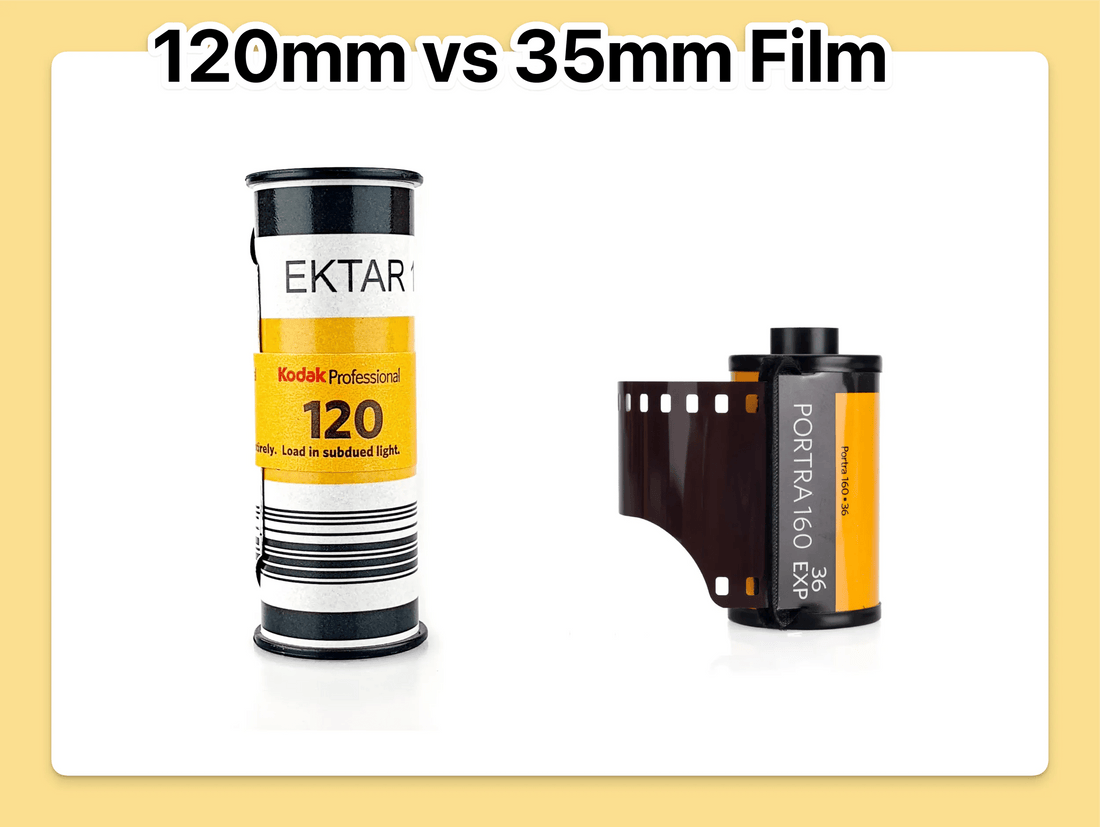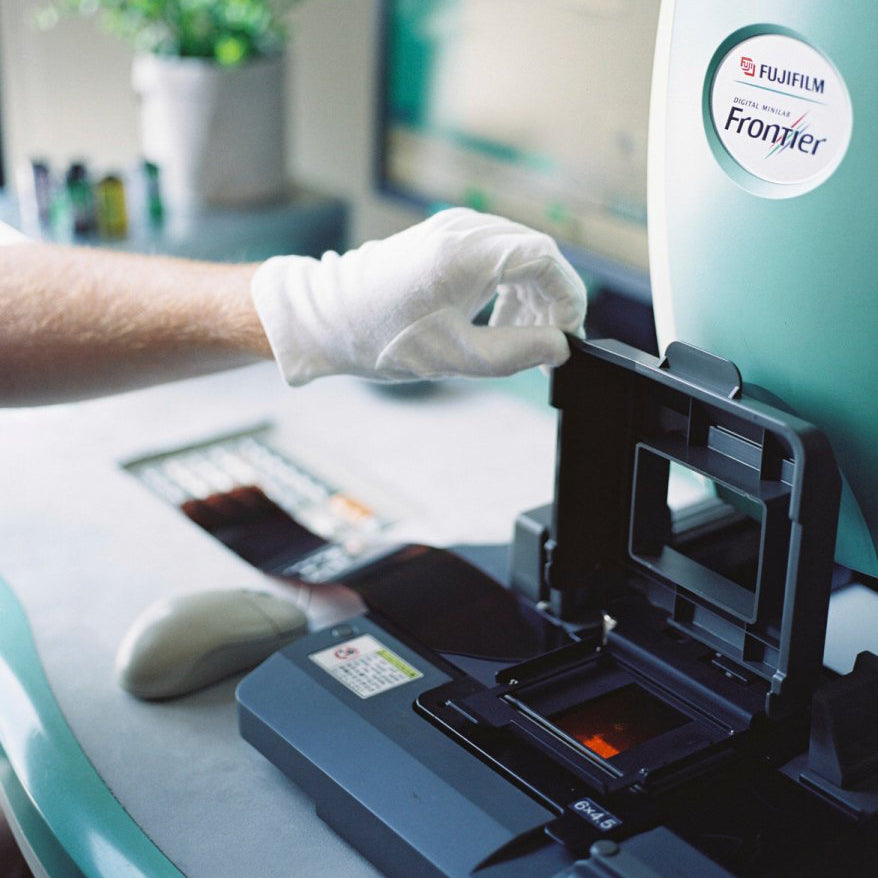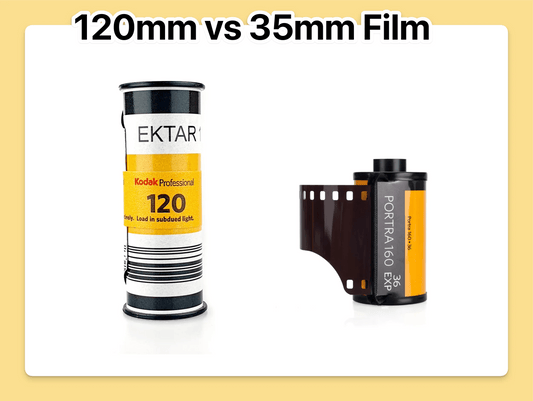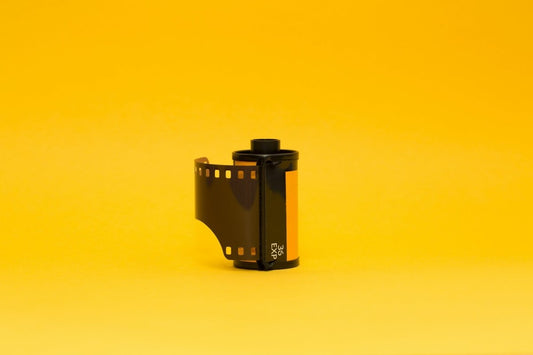
35mm vs. 120mm film
Have you ever heard of "35mm" or "120mm" and aren't quite sure what they mean? Here we explain the difference and why you should choose one or the other.
35mm film
The standard in analog photography. It comes in small cartridges and can be easily inserted into almost any 35mm camera. 35mm film is available everywhere, and there's a huge selection of types and looks. Each roll usually holds 24 or 36 images. Cameras for this purpose are often compact (point-and-shoot) or versatile (SLR).
👍🏼 Advantages:
-
cheap and easy to find
-
many different films available
-
Cameras are usually smaller, lighter and cheaper
-
more images per roll
👎🏼 Disadvantages:
-
smaller negative = less detail and slightly more grain
-
less scope for extreme cuts or large prints
120mm film (medium format)
Larger film = larger negative. This means more detail, finer grain, and often that special "medium format look" with soft depth of field. 120mm film comes as a roll without a cartridge—loading it takes some practice. Depending on the camera, you get 10–16 images per roll. Typical cameras are medium format SLRs, TLRs (Twin Lens Reflex), or cameras with a waist-level viewfinder.
👍🏼 Advantages:
-
very high image quality
-
fine grain, lots of detail
-
beautiful depth of field
-
ideal for large prints and professional work
👎🏼 Disadvantages:
-
more expensive in film and development
-
fewer images per roll
-
Cameras larger, heavier and often more expensive
-
Film change takes longer
Which camera suits which film?
It's important to note that different film formats require different cameras. Cameras are designed for either 35mm or 120mm. If you're not sure which film your camera is designed for, just google your camera brand and name.
-
35mm film : point-and-shoot, analog SLR cameras, rangefinder cameras
-
120mm film : medium format SLRs (e.g. Mamiya), TLRs (e.g. Rolleiflex), modular studio cameras (e.g. Hasselblad)
💡 In short:
- 35mm: cheaper, simpler, readily available, cameras widely used
-
120mm: more expensive, harder to handle, less available, cameras often expensive, finer grain, for experienced users




